Nicolas Auvray Gallery
New York New York
United States
About
Nicolas Auvray Gallery has evolved rapidly to feature an eclectic mix of traditional and contemporary art forms, including paintings, sculptures, photography, mixed media, and installations, creating a visual tapestry that reflects the richness and complexity of the human experience.
After a successful corporate life as an executive and whilst developing a recognized photographic body of work, Nicolas Auvray wanted to showcase other talents he was crossing paths with. From there emerged a network of artists that formed the core of the gallery and continues to grow and evolve.
From emerging talents to established names, visitors can expect to encounter a spectrum of styles, themes, and techniques that will captivate their senses and provoke thought. Core themes that the gallery has developed thus far revolve around the relationship to Nature and Elements, developing a strong base of abstract art, and work looking at the human body and form.
The gallery endeavors to find young or developing talents and enable them to develop their language through gallery exhibitions and art fairs. For instance the gallery proposes Clement Denis, Marie-Chloe Duval, or Gerard Stricher in the USA. The gallery is also proud to represent established masters such as Anne Manoli, Marco Cingolani, Francois Weil, Peter Cassagrande, Eric Ceccarini or Jehsong Baak. In the last years the Gallery has also extensively partnered with European artists to showcase their work in the USA. In parallel, the gallery is committed to representing artists from various cultural, ethnic, and social backgrounds, providing them with a platform to showcase their work and connect with a wider audience and broadening the gallery’s artistic resonance.
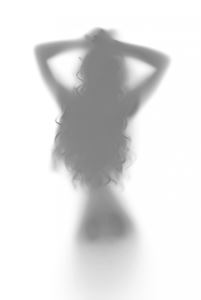
Eric Ceccarini Maddies Hair, Amnios Series
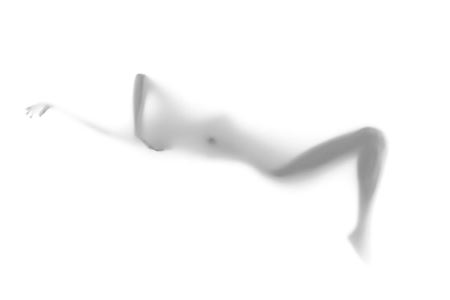
Eric Ceccarini
Levitate- from the "Amnios" Series
In Eric’s “AMNIOS” series of soul portraits the models appear in suspended animation, as if they were about to be born, and full of hidden secrets. This represents a new conceptual departure for Eric, who began as a fashion photographer, moving on to classic artistic nudes, now showing us the nude in the ethereal form. These forms are certainly beautiful, yet a membrane separates them from us: is it to hide, or protect? In person, these works are monumental in scale, adding to their sense of restrained power.
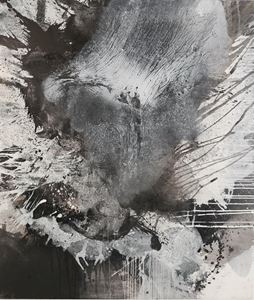
Peter Casagrande Untitled, 2016-6 , 79 x 67", Oil on Canvas
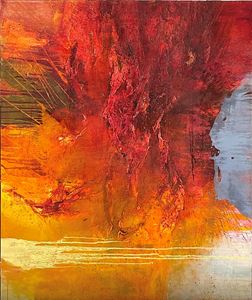
Chen Yi Ching Untitled 08 - 2023-, 44x39, Oil on Canvas
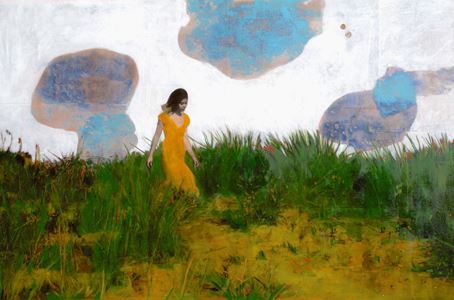
Ayline Olukman Wanderer, Oil on Canvas, 32 X 47
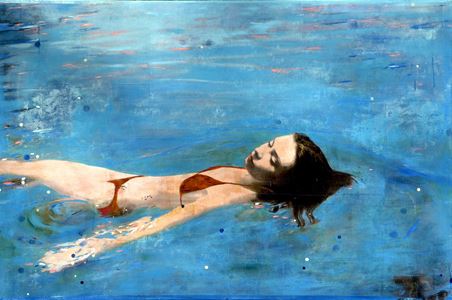
Ayline Olukman Soft Bather, Oil on Canvas, 32 X 47
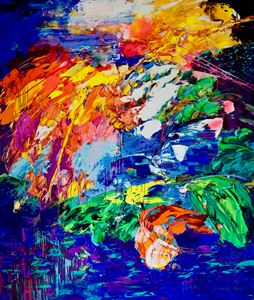
Gerard Stricher La Passe de Santorini, Oil on Canvas
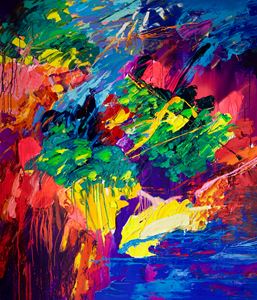
Gerard Stricher Apres l'Orage, Oil on Canvas
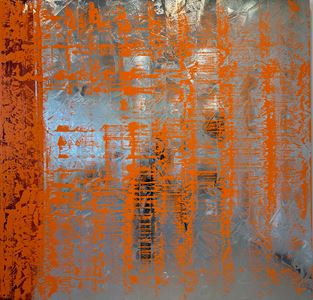
Stanley Casselman Liquid Orange
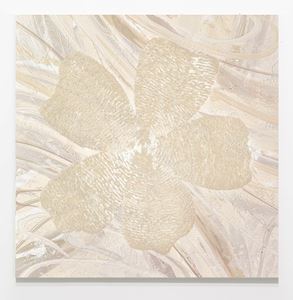
KACE (Naeem Khan/Stanley Casselman) Jardin Creme
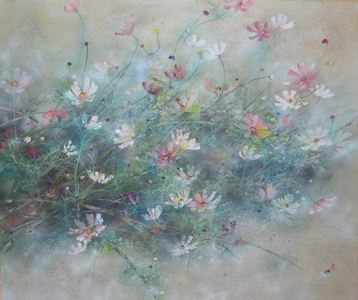
Chen Yi Ching Cosmos, Mineral Pigments on Japanese Paper
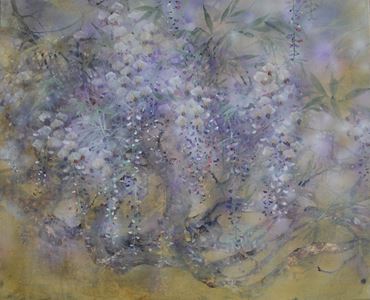
Chen Yi Ching Clochette, Mineral Pigments on Japanese Paper
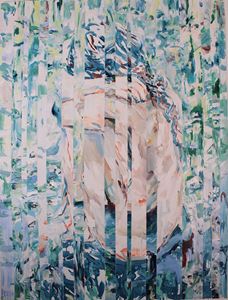
Clement Denis Etre, Acrylic on Paper, 52 × 42.5 inches
Clement Denis Monolite I, Acrylic on Paper, 66 X 55
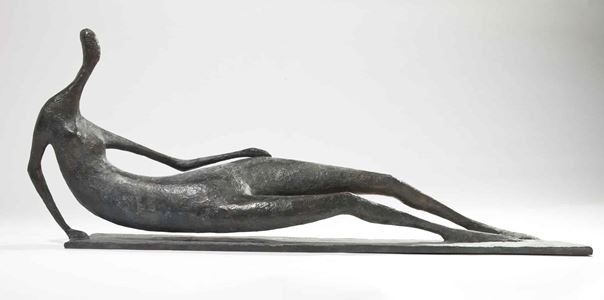
Pierre Yermia Large Lying Figure, Bronze

Pierre Yermia Horse XV, Bronze
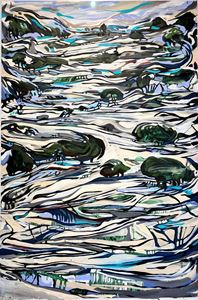
Clement Denis Vent de Brune l, Acrylic on Paper
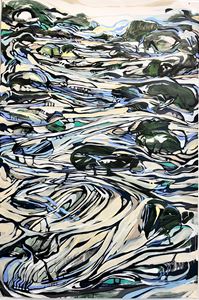
Clement Denis Vent de Brune l, Acrylic on Paper
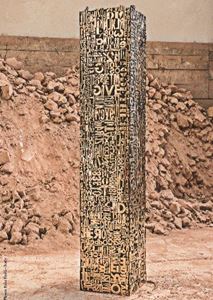
Karl Lagasse Cryptogram, Bronze

Ted Hartley TH0259

Jaques OWCZAREK Kioshimura, Bronze
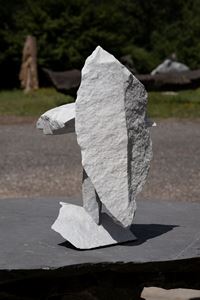
Francois Weil 995 Marbre de Carrare, Acier
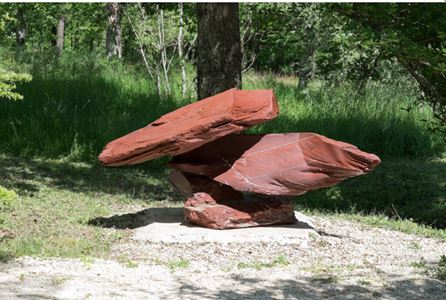
Francois Weil #869 , Ardoise du Vermont, Acier, Kinetic Sculpture






















ric Ceccarini, a prominent Belgian photographer born in 1965, has made a significant mark in the world of fashion and artistic photography since his graduation from INFAC, Brussels in 1987. Renowned for his work with elite brands and winning accolades like the Silver Lion at the Cannes International Advertising Festival, Ceccarini is celebrated for his naturalistic approach, shunning technical enhancements in favor of natural light. His artistic evolution is evident in his series like "AMNIOS", "NUDES", and "PAINTERS", where he captures the essence and soul of his subjects, creating soft, painterly images that transcend traditional photography, and blend the realms of art and fashion in a unique and compelling way.
In Eric’s “AMNIOS” series of soul portraits the models appear in suspended animation, as if they were about to be born, and full of hidden secrets. This represents a new conceptual departure for Eric, who began as a fashion photographer, moving on to classic artistic nudes, now showing us the nude in the ethereal form. These forms are certainly beautiful, yet a membrane separates them from us: is it to hide, or protect? In person, these works are monumental in scale, adding to their sense of restrained power.
ric Ceccarini, a prominent Belgian photographer born in 1965, has made a significant mark in the world of fashion and artistic photography since his graduation from INFAC, Brussels in 1987. Renowned for his work with elite brands and winning accolades like the Silver Lion at the Cannes International Advertising Festival, Ceccarini is celebrated for his naturalistic approach, shunning technical enhancements in favor of natural light. His artistic evolution is evident in his series like "AMNIOS", "NUDES", and "PAINTERS", where he captures the essence and soul of his subjects, creating soft, painterly images that transcend traditional photography, and blend the realms of art and fashion in a unique and compelling way.
In Eric’s “AMNIOS” series of soul portraits the models appear in suspended animation, as if they were about to be born, and full of hidden secrets. This represents a new conceptual departure for Eric, who began as a fashion photographer, moving on to classic artistic nudes, now showing us the nude in the ethereal form. These forms are certainly beautiful, yet a membrane separates them from us: is it to hide, or protect? In person, these works are monumental in scale, adding to their sense of restrained power.
Peter Casagrande (bornFebruary 23, 1946 in Weilheim, Bavaria, Germany) is a contemporary German painter of Italian-German origin. He lives and works near Munich .
After initial training as a script painter (1960 to 1963), he was admitted to the Academy of Fine Arts Munich, where he studied from 1970 to 1972 and from 1979 to 1980 with Prof. Troeger and from 1972 to 1975 at the Academy of Fine Arts Berlin, with Prof. Kiefer and Cruxin. In 1983 he was awarded an annual scholarship from the city of Munich and the national promotion prize of the State of Bavaria .
Born in 1975, Chen Yi Ching is a Taiwanese painter currently living and working in Paris. She is best known for her large scale polyptychs. These multi-paneled screens depict contemporary landscapes garnished with explosions of blossoming flowers. Her other large works also derive their inspiration from nature using traditional Japanese painting techniques and materials.
Chen Yi Ching is one of the rare contemporary nihon-ga artists in Europe, who has lived in Japan and studied under renowned Japanese masters. Admitted to the faculty of Fine Art, at the Kyoto City University of Arts in 2002, she was a student of YAMAZAKI Takao, the distinguished master of the Nitten movement. In 2003 she won the prestigious Grand Prize of the Shouhaku Museum with her painting entitled « Kabocha » (« Pumpkin »). Her talent and potential were recognized by UEMURA Atsushi, one of Japan’s great masters of nihon-ga and she was awarded a studio and the opportunity to study under his guidance following her Masters Degree. In 2004 she had her first solo show at the Nasic Square Gallery in Kyoto and
Greatly admiring the work of the late 19th century Impressionists, CHEN Yi Ching moved to France in 2004. She continues to develop her own artistic research and pedagogy in Paris where she has an established nihon-ga atelier. She is the author of the first book in French on the practical technique and is an expert of «nihon-ga», a form of traditional Japanese (nihon)painting (ga).
Olukman's art is a journey of self-discovery and exploration, deeply rooted in the concept of displacement as a universal experience. Her work reflects on the notion of nostalgia and the transient nature of time, challenging the conventional understanding of imagery. She focuses on the creative process itself, seeking to understand the interconnectedness of the world, body, and memory.
Central to her work is the exploration of the skin's boundary as both a personal and universal geography. This theme serves as the cornerstone of her art, blurring the lines between scale and reality, and inviting viewers into a realm where conventional boundaries are lost. Her images, which she describes as inner/outer landscapes, are a confluence of the human body and nature, exploring their similarities and differences.
For Olukman, maintaining a connection with the elemental – nature and the road – is crucial, yet she emphasizes the importance of experiencing these elements without being confined by their limitations. Her artistic journey is one of self-realization and understanding her place within the larger whole. Her work engages the viewer in a dynamic interchange between the external world and internal reflections, offering a mirror that extends a hand to the observer.
"Maintaining my quest for wandering is a quest in itself. I have come to admit that the issue of displacement is central to my work. A non-place common to everyone. For a long time, in this relation to nostalgia, I was in the disenchantment of this time that nothing holds back. Then I realized I was wrong. The image is just an image but it has a real status; it exists by itself, which causes a certain imbalance. My study focuses on the process of creation itself, the search for meaning belonging to the world and to the body through memory. The limit of the skin is an intimate and yet universal geography that is the red thread of my work, a game of putting in damage where the notion of scale or reality is lost. I see my images: these inner/outer landscapes as the place where body and nature meet, negotiate their differences and similarities. I think it’s important to stay in touch with the elements, the nature or the road, but also that we cannot clearly identify them. I need to encompass things without their limitations. The more I entered into the desire to understand myself, the more I became aware that I was part of a whole. The gaze is solicited in a continuous exchange between the outside and the inside, the reflection of the mirror is a hand extended to the viewer." - Ayline Olukman
Next Solo Show:
Nicolas Auvray Gallery April 4th - May 16, 2024. Artist will be in attendance
Olukman's art is a journey of self-discovery and exploration, deeply rooted in the concept of displacement as a universal experience. Her work reflects on the notion of nostalgia and the transient nature of time, challenging the conventional understanding of imagery. She focuses on the creative process itself, seeking to understand the interconnectedness of the world, body, and memory.
Central to her work is the exploration of the skin's boundary as both a personal and universal geography. This theme serves as the cornerstone of her art, blurring the lines between scale and reality, and inviting viewers into a realm where conventional boundaries are lost. Her images, which she describes as inner/outer landscapes, are a confluence of the human body and nature, exploring their similarities and differences.
For Olukman, maintaining a connection with the elemental – nature and the road – is crucial, yet she emphasizes the importance of experiencing these elements without being confined by their limitations. Her artistic journey is one of self-realization and understanding her place within the larger whole. Her work engages the viewer in a dynamic interchange between the external world and internal reflections, offering a mirror that extends a hand to the observer.
"Maintaining my quest for wandering is a quest in itself. I have come to admit that the issue of displacement is central to my work. A non-place common to everyone. For a long time, in this relation to nostalgia, I was in the disenchantment of this time that nothing holds back. Then I realized I was wrong. The image is just an image but it has a real status; it exists by itself, which causes a certain imbalance. My study focuses on the process of creation itself, the search for meaning belonging to the world and to the body through memory. The limit of the skin is an intimate and yet universal geography that is the red thread of my work, a game of putting in damage where the notion of scale or reality is lost. I see my images: these inner/outer landscapes as the place where body and nature meet, negotiate their differences and similarities. I think it’s important to stay in touch with the elements, the nature or the road, but also that we cannot clearly identify them. I need to encompass things without their limitations. The more I entered into the desire to understand myself, the more I became aware that I was part of a whole. The gaze is solicited in a continuous exchange between the outside and the inside, the reflection of the mirror is a hand extended to the viewer." - Ayline Olukman
Next Solo Show:
Nicolas Auvray Gallery April 4th - May 16, 2024. Artist will be in attendance
Born into a family of artists in Sarrebourg, Moselle, in 1948, Gérard Stricher began painting in the 1970s, when he was still an engineering student in Paris. He moved in art circles and found buyers and encouragement for his work, but his interest in the industrial field shifted his path to an international career in management. He became a "world citizen," absorbing landscapes and cultures from all corners of the globe, an influence that would later be reflected in his work.
He led a hugely successful executive career until he eventually moved back to painting in 2003. Stricher is adamant that his career and its world travel opportunities have shaped his art uniquely, allowing him to view many different cultures and artistic trends beyond that he was raised with, which greatly widened his scope of style.
In 2004 he bought an old mill in the Vexin region of northwestern France, where he set up his studio and began working intensely: this was a new adventure centered totally on his painting. Influenced by the nature surrounding
him, Stricher’s work focuses on abstract explorations of color. Conscious of the land surrounding his workspace, Stricher describes le Vexin as “offering a unique quality of light and diversity of landscapes.”
Though many would describe his work as abstraction, Gérard Stricher himself believes there is no such thing. Each painting created is a work of a living being who is present in nature; the work reflected onto the canvas is therefore influenced by the artist’s own unconscious impulses. Much of Stricher’s work can be rooted to his prolonged intrest in the School of Cobra Painters: Appel, Lindström, Jorn, etc. Pushing his research in this direction has led him to
discover the true power of pure color and material. However, little planning is done in preparation for his paintings, they rely on his spontanious emotions and instinctual color parings.
“My gestures in the act of painting do not follow the inputs of the brain, often my hand makes gestures that rationality does not command, it is the great mystery, the journey into the unknown...”
Born into a family of artists in Sarrebourg, Moselle, in 1948, Gérard Stricher began painting in the 1970s, when he was still an engineering student in Paris. He moved in art circles and found buyers and encouragement for his work, but his interest in the industrial field shifted his path to an international career in management. He became a "world citizen," absorbing landscapes and cultures from all corners of the globe, an influence that would later be reflected in his work.
He led a hugely successful executive career until he eventually moved back to painting in 2003. Stricher is adamant that his career and its world travel opportunities have shaped his art uniquely, allowing him to view many different cultures and artistic trends beyond that he was raised with, which greatly widened his scope of style.
In 2004 he bought an old mill in the Vexin region of northwestern France, where he set up his studio and began working intensely: this was a new adventure centered totally on his painting. Influenced by the nature surrounding
him, Stricher’s work focuses on abstract explorations of color. Conscious of the land surrounding his workspace, Stricher describes le Vexin as “offering a unique quality of light and diversity of landscapes.”
Though many would describe his work as abstraction, Gérard Stricher himself believes there is no such thing. Each painting created is a work of a living being who is present in nature; the work reflected onto the canvas is therefore influenced by the artist’s own unconscious impulses. Much of Stricher’s work can be rooted to his prolonged intrest in the School of Cobra Painters: Appel, Lindström, Jorn, etc. Pushing his research in this direction has led him to
discover the true power of pure color and material. However, little planning is done in preparation for his paintings, they rely on his spontanious emotions and instinctual color parings.
“My gestures in the act of painting do not follow the inputs of the brain, often my hand makes gestures that rationality does not command, it is the great mystery, the journey into the unknown...”
Stanley Casselman is a New York-based artist whose sumptuously calculated surfaces are motivated by a sense of awe and wonderment in the intangible spiritual elements of our being.
The known and speculative forces that create the lattice of our physical reality are what swim in the right side of his brain and the fundamental belief that absolute truth lies only within abstraction, occupies the left. Baroque yet highly calculated, his process towards picture making reveals itself through a spectrum of layers strokes and gestures exploring a range of emotions in an efficacious search for higher consciousness. Casselman is deeply committed to the notion that color, line, and form have the ability to change cognizance.
Casselman began painting on silkscreen in college in the early ‘80’s. The screen, a grid of essentially perfectly spaced fishing line, has opened a universe of possibility and many consider Casselman the pioneer within the medium. He deploys numerous inventive ways to manipulate pigment and often paints from the back side of the screen. His unique approach enables the capture or the freezing of energetic events on the verso. The imagery that’s revealed is what’s typically the underside of painting, the side that would be in contact with the substrate or the side which is normally hidden and never seen.
Casselman (b.1963) received his Bachelor of Arts from Pitzer College, Claremont, CA. His works have been exhibited nationally and internationally at galleries and museums, including Solomon R. Guggenheim Museum, New York, NY; The Metropolitan Museum of Art, New York, NY; The Tampa Museum of Art, Tampa, FL; Gazelli Art House, Baku, Azerbijan and London, UK; Secci Gallery, Milan, Italy. His works are in the permanent collections of the New Orleans Museum of Art, New Orleans, LA; Frederick R. Weisman Art Foundation, Los Angeles, CA; Flint Institute of Arts, Flint, MI; and Borusan Contemporary, Istanbul.
Born in 1975, Chen Yi Ching is a Taiwanese painter currently living and working in Paris. She is best known for her large scale polyptychs. These multi-paneled screens depict contemporary landscapes garnished with explosions of blossoming flowers. Her other large works also derive their inspiration from nature using traditional Japanese painting techniques and materials.
Chen Yi Ching is one of the rare contemporary nihon-ga artists in Europe, who has lived in Japan and studied under renowned Japanese masters. Admitted to the faculty of Fine Art, at the Kyoto City University of Arts in 2002, she was a student of YAMAZAKI Takao, the distinguished master of the Nitten movement. In 2003 she won the prestigious Grand Prize of the Shouhaku Museum with her painting entitled « Kabocha » (« Pumpkin »). Her talent and potential were recognized by UEMURA Atsushi, one of Japan’s great masters of nihon-ga and she was awarded a studio and the opportunity to study under his guidance following her Masters Degree. In 2004 she had her first solo show at the Nasic Square Gallery in Kyoto and
Greatly admiring the work of the late 19th century Impressionists, CHEN Yi Ching moved to France in 2004. She continues to develop her own artistic research and pedagogy in Paris where she has an established nihon-ga atelier. She is the author of the first book in French on the practical technique and is an expert of «nihon-ga», a form of traditional Japanese (nihon)painting (ga).
Born in 1975, Chen Yi Ching is a Taiwanese painter currently living and working in Paris. She is best known for her large scale polyptychs. These multi-paneled screens depict contemporary landscapes garnished with explosions of blossoming flowers. Her other large works also derive their inspiration from nature using traditional Japanese painting techniques and materials.
Chen Yi Ching is one of the rare contemporary nihon-ga artists in Europe, who has lived in Japan and studied under renowned Japanese masters. Admitted to the faculty of Fine Art, at the Kyoto City University of Arts in 2002, she was a student of YAMAZAKI Takao, the distinguished master of the Nitten movement. In 2003 she won the prestigious Grand Prize of the Shouhaku Museum with her painting entitled « Kabocha » (« Pumpkin »). Her talent and potential were recognized by UEMURA Atsushi, one of Japan’s great masters of nihon-ga and she was awarded a studio and the opportunity to study under his guidance following her Masters Degree. In 2004 she had her first solo show at the Nasic Square Gallery in Kyoto and
Greatly admiring the work of the late 19th century Impressionists, CHEN Yi Ching moved to France in 2004. She continues to develop her own artistic research and pedagogy in Paris where she has an established nihon-ga atelier. She is the author of the first book in French on the practical technique and is an expert of «nihon-ga», a form of traditional Japanese (nihon)painting (ga).
Clément Denis, born in 1991, is a contemporary artist whose work is a rich amalgamation of mythology, literature, poetry, and pivotal events from the 20th and 21st centuries. Living and working in the historic ambiance of Monet's house in Vétheuil, France, Denis is a graduate of the Fine Arts School of Paris and was honored with the BV Collectors Award in 2019. His artistic approach is deeply spiritual and emotional, yet simultaneously physical and visceral. Denis prefers to paint with acrylics, often using his hands to rapidly spread color across large canvases or heavy sheets of paper, creating works that are as much about the act of painting as they are about the finished product.
Denis is also adept in creating mosaics with Murano glass, a technique that adds a textural dimension to his work. The themes he explores are as diverse as his mediums. He delves into nostalgic landscapes, the complex inner worlds of individuals, and the spiritual journey of the human soul. His works often reflect on contemporary social issues, such as the exile and wandering of migrants from the Middle East and Africa, presenting a poignant commentary on current global challenges.
His style and color palette are dynamic, changing with the subject he explores. This adaptability in his art is a testament to his respect and inspiration from both old and contemporary masters. Denis sees himself as a part of the European humanist artistic tradition, a link in a chain that connects the past with the present, and the tangible with the spiritual.
Denis' art is a dialogue between the artist and his myriad inspirations, where each stroke is a word and every color a sentence. In his journey, he continues to push the boundaries of traditional art forms, creating a unique space for himself in the contemporary art world. His works are not just visual feasts but are also invitations to introspect and connect with the larger human experience, making Clément Denis a notable figure in modern art.
Clément Denis, born in 1991, is a contemporary artist whose work is a rich amalgamation of mythology, literature, poetry, and pivotal events from the 20th and 21st centuries. Living and working in the historic ambiance of Monet's house in Vétheuil, France, Denis is a graduate of the Fine Arts School of Paris and was honored with the BV Collectors Award in 2019. His artistic approach is deeply spiritual and emotional, yet simultaneously physical and visceral. Denis prefers to paint with acrylics, often using his hands to rapidly spread color across large canvases or heavy sheets of paper, creating works that are as much about the act of painting as they are about the finished product.
Denis is also adept in creating mosaics with Murano glass, a technique that adds a textural dimension to his work. The themes he explores are as diverse as his mediums. He delves into nostalgic landscapes, the complex inner worlds of individuals, and the spiritual journey of the human soul. His works often reflect on contemporary social issues, such as the exile and wandering of migrants from the Middle East and Africa, presenting a poignant commentary on current global challenges.
His style and color palette are dynamic, changing with the subject he explores. This adaptability in his art is a testament to his respect and inspiration from both old and contemporary masters. Denis sees himself as a part of the European humanist artistic tradition, a link in a chain that connects the past with the present, and the tangible with the spiritual.
Denis' art is a dialogue between the artist and his myriad inspirations, where each stroke is a word and every color a sentence. In his journey, he continues to push the boundaries of traditional art forms, creating a unique space for himself in the contemporary art world. His works are not just visual feasts but are also invitations to introspect and connect with the larger human experience, making Clément Denis a notable figure in modern art.
Pierre Yermia is a French sculptor who lives and works in Charenton-le-pont, France.
His work is a constant quest for an unlikely and precarious moment of equilibrium, where strength and fragility are simultaneously confronted. Yermia’s deep-rooted human or animal “figures” are standing on their brittle limbs and are slowly rising, defying the law of gravity.
Elongated shapes, frail limbs contrast with more massive torsos, heads reduced to the essential, dominate long slender necks. Heavy and light, full and empty, convex and concave are playing a permanent game, creating a monumental and open space.
Small and medium size formats are a necessary subsequent stage to his monumental sculptures (on average, height or length: 3 m). These sculptures no matter how optimistic and serene testify to a humanity in
Pierre Yermia is a French sculptor who lives and works in Charenton-le-pont, France.
His work is a constant quest for an unlikely and precarious moment of equilibrium, where strength and fragility are simultaneously confronted. Yermia’s deep-rooted human or animal “figures” are standing on their brittle limbs and are slowly rising, defying the law of gravity.
Elongated shapes, frail limbs contrast with more massive torsos, heads reduced to the essential, dominate long slender necks. Heavy and light, full and empty, convex and concave are playing a permanent game, creating a monumental and open space.
Small and medium size formats are a necessary subsequent stage to his monumental sculptures (on average, height or length: 3 m). These sculptures no matter how optimistic and serene testify to a humanity in
From the Artist Studio
Clément Denis, born in 1991, is a contemporary artist whose work is a rich amalgamation of mythology, literature, poetry, and pivotal events from the 20th and 21st centuries. Living and working in the historic ambiance of Monet's house in Vétheuil, France, Denis is a graduate of the Fine Arts School of Paris and was honored with the BV Collectors Award in 2019. His artistic approach is deeply spiritual and emotional, yet simultaneously physical and visceral. Denis prefers to paint with acrylics, often using his hands to rapidly spread color across large canvases or heavy sheets of paper, creating works that are as much about the act of painting as they are about the finished product.
Denis is also adept in creating mosaics with Murano glass, a technique that adds a textural dimension to his work. The themes he explores are as diverse as his mediums. He delves into nostalgic landscapes, the complex inner worlds of individuals, and the spiritual journey of the human soul. His works often reflect on contemporary social issues, such as the exile and wandering of migrants from the Middle East and Africa, presenting a poignant commentary on current global challenges.
His style and color palette are dynamic, changing with the subject he explores. This adaptability in his art is a testament to his respect and inspiration from both old and contemporary masters. Denis sees himself as a part of the European humanist artistic tradition, a link in a chain that connects the past with the present, and the tangible with the spiritual.
Denis' art is a dialogue between the artist and his myriad inspirations, where each stroke is a word and every color a sentence. In his journey, he continues to push the boundaries of traditional art forms, creating a unique space for himself in the contemporary art world. His works are not just visual feasts but are also invitations to introspect and connect with the larger human experience, making Clément Denis a notable figure in modern art.
Clément Denis, born in 1991, is a contemporary artist whose work is a rich amalgamation of mythology, literature, poetry, and pivotal events from the 20th and 21st centuries. Living and working in the historic ambiance of Monet's house in Vétheuil, France, Denis is a graduate of the Fine Arts School of Paris and was honored with the BV Collectors Award in 2019. His artistic approach is deeply spiritual and emotional, yet simultaneously physical and visceral. Denis prefers to paint with acrylics, often using his hands to rapidly spread color across large canvases or heavy sheets of paper, creating works that are as much about the act of painting as they are about the finished product.
Denis is also adept in creating mosaics with Murano glass, a technique that adds a textural dimension to his work. The themes he explores are as diverse as his mediums. He delves into nostalgic landscapes, the complex inner worlds of individuals, and the spiritual journey of the human soul. His works often reflect on contemporary social issues, such as the exile and wandering of migrants from the Middle East and Africa, presenting a poignant commentary on current global challenges.
His style and color palette are dynamic, changing with the subject he explores. This adaptability in his art is a testament to his respect and inspiration from both old and contemporary masters. Denis sees himself as a part of the European humanist artistic tradition, a link in a chain that connects the past with the present, and the tangible with the spiritual.
Denis' art is a dialogue between the artist and his myriad inspirations, where each stroke is a word and every color a sentence. In his journey, he continues to push the boundaries of traditional art forms, creating a unique space for himself in the contemporary art world. His works are not just visual feasts but are also invitations to introspect and connect with the larger human experience, making Clément Denis a notable figure in modern art.
The acclaimed artist Karl Lagasse came into prominence in 2009 with his “One Dollar” sculptures. In 2009, Artprice named Karl as one of the top 10 sculptors under 30 in the world. In 2012 the New York publication Farameh selected Karl for their book FOR WHICH IT STANDS: Americana in Contemporary Art in which he is represented as one of the fifty best contemporary artists who found inspiration through traditional American icons. During the 2016 Art Paris Art Fair, the President of the French Republic personally congratulated Karl for the success of his 2-meter bronze “One Dollar” sculpture displayed at the Grand Palais.
Karl began his artistic journey with his collages when he was 7 years old. In the same year, he met the French sculptor César Baldaccini who inspired Karl to continue developing his work. He ventured into the Paris metro where tagging and graffiti became his predominant world of creation. However, his collages remained his true passion. It was the artist Yvaral Vasarely that suggested Karl incorporate his collages with his tags, and in 2003 Karl prepared his first exposition in Paris. His first solo show presenting his “Building” sculptures was in 2006 at the Isy Brachot Gallery in Brussels. Two years later, at the Theatre Espace Pierre Cardin, Karl was back in Paris for his first solo show of paintings and sculptures with added elements of videography and photography.
Karl enjoys premiering his new works at expositions worldwide including: 2011 Art Monaco with Gallery Bel Air Fine Art where he presented his creation “Cryptogram One”; 2012 solo show with Gallery Artco France where he presented his “one dollar” sculptures with the chosen the theme "In God We Trus`"; 2016 solo show Gallery Atrium in Marbella (Spain) where the city’s mayor inaugurated the exposition and spoke to the international press regarding the work of Karl Lagasse.
In 2010, Karl was chosen to represent the city of Deauville (Normandy) at the world riding championships Horsemania in Lexingston (USA) where he created a horse sculpture in honor of the events. Returning to Deauville in 2012, Karl offered the city his bronze “Cryptogram One” with a message of peace and love, which has been installed at the entrance of Deauville and was inaugurated by the mayor, Philippe Augier. In 2012, Karl created a monumental sculpture for the 65th Festival of Cannes in collaboration with Corbis. Images from 1945 to 2011 were used in the work of art, which was exhibited at the Carlton Hotel where artists involved in the festival could sign their name. Signatures of the artists include: Alexandra Lamy, Gad Elmaleh, Bérénice Bejo, Marie Gilain, Michael Youn, José Garcia, Michel Hazanavicius, Nadine Labaki, Cuba Gooding Jr., Tim Roth, Matthew McConaughey, and Zac Efron.
France Culture in a 2016 article, amongst other prestigious artists, such as Jeff Koons, mentions Karl Lagasse and his monumental installation called “A Piece of Heaven on Earth”. The installation shows a Maserati covered in white plastic film with a sculpture of Jesus Christ at whose feet are several dollar sculptures together representing the greatest debt of humanity paid in full. The installation was presented at the 2015 Art Paris Art Fair in collaboration with the Italian luxury vehicle manufacturer Maserati. Maserati first contacted Karl for collaboration in 2014 at the worldwide launching of their new car model Ghibli. The Ghibli model was used by Karl in creating his masterpiece Psalm 2, which celebrated Maserati’s 100th year and was revealed at the 2014 Art Paris Art Fair.
In 2017, the American Film Festival of Deauville chose Karl Lagasse to realize their Trophy. Karl’s monumental work "Cryptogram One" was the inspiration behind the creation of the trophies presented to the winners at the 43rd edition of the Festival. In all, 13 trophies were awarded. These works of art were cast in polished aluminum with coded messages on their four faces including "Hope", "7th Art", and "Deauville".
Born in Omaha, Nebraska, Ted Hartley faced the early loss of his father, an executive at AT&T. His mother, a dedicated teacher, subsequently raised Ted and his sister by herself, devising special courses for public schools. Hartley's education spanned prestigious institutions, including Annapolis, Georgetown University, and Harvard Business School. His athletic prowess was evident as a U.S. Olympic wrestling finalist and as Head of the International Relations section during the 1984 Olympics in Los Angeles.
His military service was distinguished; as a Navy-carrier-based jet fighter pilot, Hartley embarked on assignments globally, including a period as a White House aide during the Kennedy-Eisenhower era. An aircraft accident at 28 led to his disability retirement as a Lieutenant Commander. Transitioning to civilian life, Hartley navigated through various executive roles, ultimately becoming the Executive Vice President of First Western Financial Corporation.
When the company was acquired by a larger bank, Hartley, then in Los Angeles for a job interview, was serendipitously cast in the television series "Peyton Place" as the Reverend Jerry Bedford. This foray into acting opened doors to co-star roles with legends like Clint Eastwood, Cary Grant, Dean Martin, and Robert Redford, and he later starred in the television series "Chopper One" on ABC.
Hartley also explored directing television commercials and producing films, leading to a significant opportunity with RKO Pictures Corporation. As CEO, he produced a dozen films and several television movies, broadening RKO's scope into Broadway productions. His industry stature is recognized as a member of the Academy of Motion Picture Arts and Sciences and as a Tony voter.
In his philanthropic ventures, Hartley has made substantial impacts as the former Chairman of ORBIS International and as a founding director of the Steadman Philippon Research Institute. He continues to serve on the board of the Village Preservation Society of East Hampton.
Art became a sanctuary for Hartley, especially as he cared for his late wife, actress Dina Merrill, during her health decline. He initiated art classes in their home, engaging Merrill and her friends in a creative and emotional outlet. These classes inspired his own passion for painting, which has now grown into a significant and fulfilling part of his life. Hartley's legacy extends to his family, with a son and two grandsons carrying forward his diverse lineage of achievements and contributions.
Over the past twenty years, Jacques Owczarek has made a name for himself with collectors as one of the most talented sculptors of his generation. His singular and immediately recognizable "forms" as he calls them have traveled all over the world, from Paris to Shanghai, Abu Dhabi to New York, London and Moscow, praised and sought-after as pieces of a remarkable body of work. Offering a unique and unprecedented visual vocabulary on the artistic landscape, the self-taught artist clashes, surprises and stirs emotions with a razor-sharp truth, a no-frills sincerity that mirrors his sculptures. The soul – anima – is the inherent driving force of his astonishing animals that incarnate, no matter what angle you view them from, a striking verticality that is is received by the artist and recreated as if by "magic", a word dear to Jacques Owczarek. Here the material is taken far beyond itself, bursting with life, the essential, and the purity of line tells us just how obvious beauty is and how it raises us to our true selves. Text by Caroline Bongrand
François Weil, born in 1964 in Paris, is a renowned French sculptor whose work is characterized by a unique approach to stone. He is not a traditional carver of stone; instead, he focuses on cutting and assembling stones into specific shapes, exploring balance and kinetics in his sculptures.
Weil graduated from the National School of Applied Arts and Crafts in Paris in 1986 and completed his sculpture studies at the National School of Fine Arts in Paris in 1988. His talent and unique approach to sculpture have been recognized with several awards, including the Pierre Cardin prize from the Academy of Fine Arts in Paris in 1997 and the Grand Prize at the Poznan sculpture biennial in Poland in 2006. In 2016, he received the Pierre Gianadda Foundation Prize at the Academy of Fine Arts in Paris.
His works often bring together classical materials like black and blue Belgian marble, granite, Volvic stone, and Trélazé slate, arranged into frames or animated structures. This approach creates a blend of traditional and contemporary styles, allowing hard and dense stones like granite to exhibit subtle movement, challenging the laws of gravity and exploring the realms of imaginary archaeology and mineral exploration.
François Weil's sculptures have been exhibited in various prestigious locations and events, including the Fondation Arp in Clamart, France, the Église Saint Étienne in Beaugency, France, and Chambord Castle in France. He has also created monumental sculptures displayed in countries such as Brazil, Albania, China, Egypt, Russia, Mali, Romania, Guatemala, Italy, India, South Korea, and Germany.
François Weil, born in 1964 in Paris, is a renowned French sculptor whose work is characterized by a unique approach to stone. He is not a traditional carver of stone; instead, he focuses on cutting and assembling stones into specific shapes, exploring balance and kinetics in his sculptures.
Weil graduated from the National School of Applied Arts and Crafts in Paris in 1986 and completed his sculpture studies at the National School of Fine Arts in Paris in 1988. His talent and unique approach to sculpture have been recognized with several awards, including the Pierre Cardin prize from the Academy of Fine Arts in Paris in 1997 and the Grand Prize at the Poznan sculpture biennial in Poland in 2006. In 2016, he received the Pierre Gianadda Foundation Prize at the Academy of Fine Arts in Paris.
His works often bring together classical materials like black and blue Belgian marble, granite, Volvic stone, and Trélazé slate, arranged into frames or animated structures. This approach creates a blend of traditional and contemporary styles, allowing hard and dense stones like granite to exhibit subtle movement, challenging the laws of gravity and exploring the realms of imaginary archaeology and mineral exploration.
François Weil's sculptures have been exhibited in various prestigious locations and events, including the Fondation Arp in Clamart, France, the Église Saint Étienne in Beaugency, France, and Chambord Castle in France. He has also created monumental sculptures displayed in countries such as Brazil, Albania, China, Egypt, Russia, Mali, Romania, Guatemala, Italy, India, South Korea, and Germany.
Exhibiting Artists
Other Represented Artists
